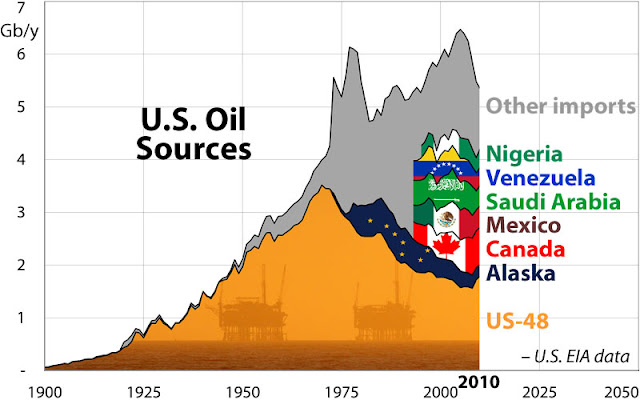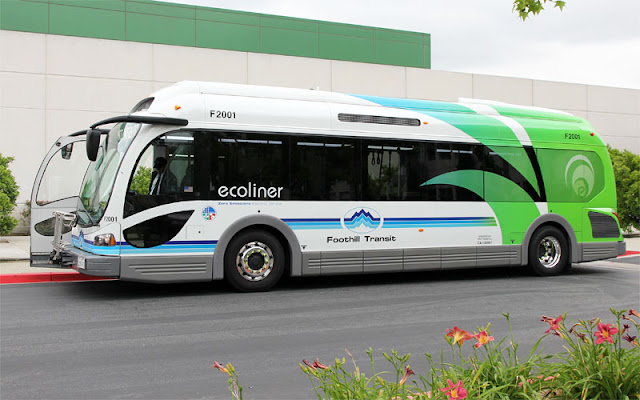
The the first critical reason for Freedom from Oil is declining oil world supply....

The supply of oil in the ground is not infinite. Someday, annual world crude oil production has to reach a peak and start to decline. It is my opinion that the peak will occur in late 2005 or in the first few months of 2006. – Princeton University Professor Emeritus Kenneth Deffeyes, Beyond Oil
Based on oil geology, the
peak of oil production occurs when around half of total recoverable oil has been produced. Not that we're "out of oil", but that supply will
inexorably fall after the peak. The
United States peaked in 1970 (blue area).
The above chart, data from
ASPO (the Association for the Study of Peak Oil & Gas) founder Colin Campbell (
Newsletter #100 and
OilPoster.org), summarizes our likely situation. Now even the International Energy Agency's
World Energy Outlook 2010 sees a 2006 peak of 70 mb/d world crude oil production.

Won't oil companies keep finding more oil fields, especially with new technology?
No, as shown above, the
biggest fields were discovered decades ago and are running down faster than new discoveries can replace them.
Matthew Simmons' Twilight in the Desert summarizes numerous technical reports to conclude even Saudi Arabia's production may have peaked.

The
United States' 1970 oil peak was never exceeded despite all of Alaska's new production (
U.S. EIA). The big rise in demand has been supplied with imported oil (top five import sources' data beginning 1993/1995).
Nearly
two-thirds of United States oil is imported, some from "countries that don't like us very much" (John McCain, 2008), and causing
half of the U.S. balance of payments deficit, over $20 billion per month.
"Drill Baby Drill" simply cannot change the U.S.'s production decline. We need
real solutions that reduce oil use, or else ...

We've already experienced for the consequences of oil supply less than demand:
price spikes (2008) and
gas lines (1979).

Synthetic fuel from Canadian
tar sands consumes vast quantities of natural gas and water, creates huge waste ponds, and is worse than conventional oil for global warming (
Suncor photo).
Synthetic fuel from coal, aka "
liquid coal", has twice the global warming emissions as petroleum.

The Gulf oil disaster (
USCG ,
AP photos; also see
LA Times) is the latest example of environmental and economic devastation from oil production. Not to mention decades of air pollution. How much stronger a message do we need??

The vast majority of oil is used for transportation, with over half for personal vehicles' motor gasoline.
For more on Peak Oil see
Energy Bulletin's
Peak Oil Primer, The Oil Drum's
Peak Oil Overview, and authors
Richard Heinberg and
James Howard Kunstler.
NEXT:
2. Global Warming






















